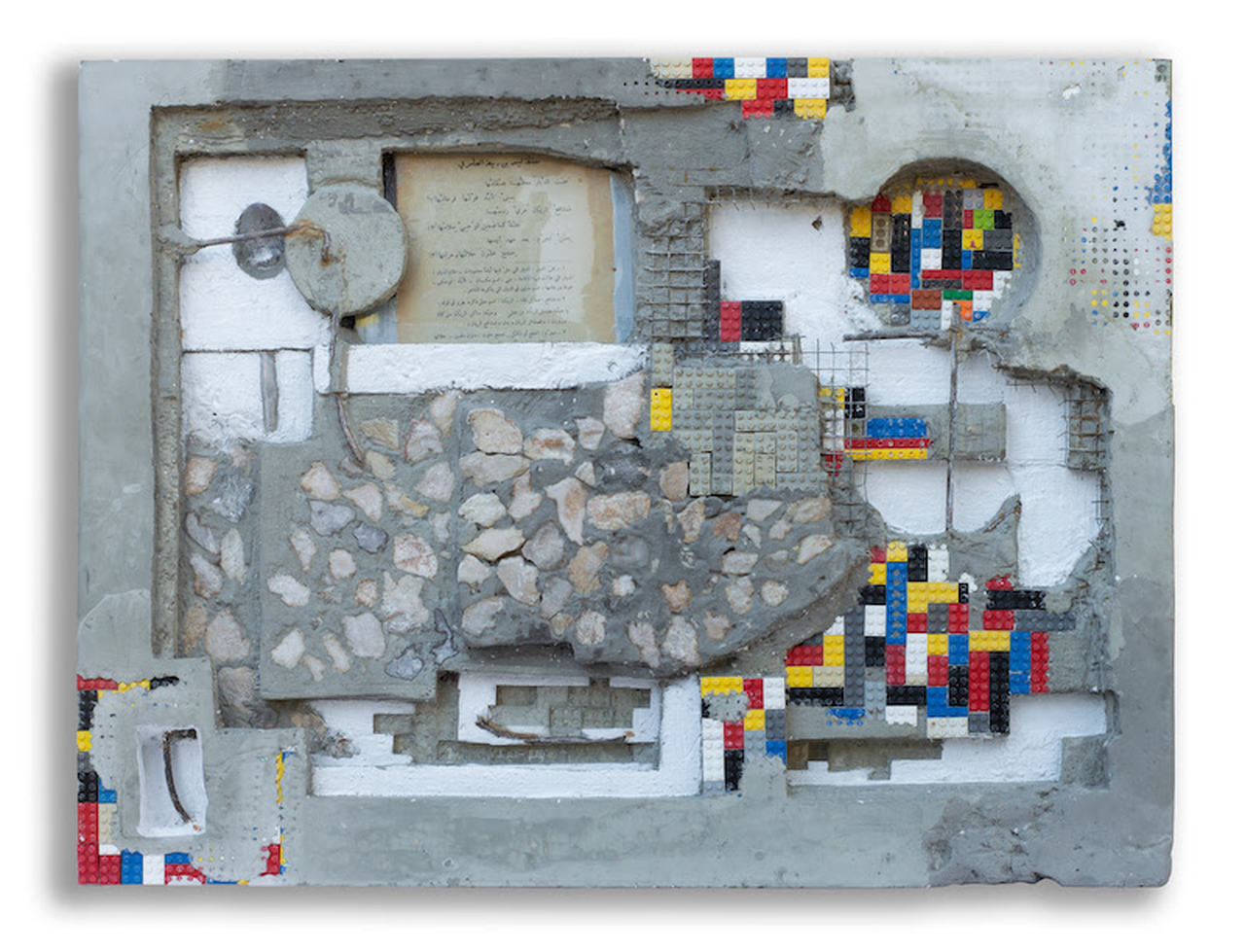This exhibition celebrates the intricate and expansive history of linguistics, transcending its traditional boundaries to explore innovative expressions through the works of six artists from different corners of the world. From its origins in primitive eras to the contemporary era, this exhibition aims to delve into the rich and comprehensive evolution of the history of language and its dynamic impact on contemporary artistic visions.

From the Middle East, the exhibition features the works of Egyptian artist Diaa Allam which showcase his achievement in revolutionizing the traditional art form of Arabic calligraphy. By combining ancient techniques with innovative approaches, Diaa Allam aims to bridge the gap between history and the future. Beyond Islamic art, Arabic calligraphy carries cultural significance that transcends borders. Blending calligraphy with unconventional mediums, he paves the way for cross-cultural appreciation and understanding.

Dia Allam Infront of his works Virtues on Tiffany Blue (left) and Virtues on Pink (right) 
In light of embracing contemporary applications of language, we present the works of British artist Josh Rowell. His art delves into language, reshaping information, and celebrating the handmade in a time increasingly dominated by the virtual world. The visionary series “Painting Language” embodies his fascination with the intricate nature of communication in the 21st century. Each painting in this series serves as a coding system, representing text from various sources and languages. Through colour, sequence, and pattern, the language transforms into detailed and symmetrical works of art. His works presented in the exhibition are themed around Sacred Geometry, an ancient branch of mathematics that ascribes symbolic and sacred meanings to geometric shapes and proportions. This concept is found not only in man-made art and architecture but also in the natural world, where flowers, shells, and trees seem to grow according to the same principles. Sacred geometry has been studied and utilised across many religions, representing the earthly principal laws that govern our world.

The appreciation and application of geometry are also seen in the works of Azerbaijani artist, Kaikhan Salakhov, who has devoted over 10,000 hours to exploring the realm of geometry, firmly believing that understanding its principles is essential to comprehend the architecture of the Universe, as affirmed by Pythagoras. Drawing inspiration from Eastern geometry, he acknowledges its rich tradition as the most developed in the discipline. Salakhov is grateful to Islam for bringing forth countless geometric ornaments that hold profound knowledge of the Eternal. By analysing numerous oriental ornaments, he has synthesised this knowledge and put it into practice as an expression of gratitude to his ancestors, as well as to Islam, the Quran, and the Kaaba, which he considers the main teachers of sacred geometry.

His artistic journey takes shape in paintings based on the ninety-nine characteristics of the Almighty. These characteristics are artfully grouped into eleven spheres on each of his nine canvases. The Kaaba holds special significance in his work, serving as the source of all geometric entanglements and symbolising the receptacle of all believers performing the Hajj, meditating on the given ninety-nine characteristics of the Almighty.

Syrian-Palestinian artist Sawsan Al Bahar reinterprets her installation, Leaving is Home, highlighting personal scripts and narratives. Written by her late grandfather about his hometown, Yafa, the collection of sculptural sheets is inscribed with pages from his memoirs about Palestine, the home he left in 1948. Reflecting on his departure and drawing comparisons to her own life, Sawsan frames fragmented moments of his memories, giving his words a new voice. The installation resonates with the exploration of language and its impact on personal history and connections. Similar to how language has evolved over time, Al Bahar’s installation reconstructs one unfinished chapter, evoking a past that is still unforgotten by her, inviting visitors to confront the installation and glimpse at fractured remembrances. Just as the exhibition celebrates the multifaceted history and evolution of language, Al Bahar’s artistic approach with ‘Leaving is Home’ captures the essence of language’s ability to transcend time and connect contemporary life to the past, embracing innovative expressions and understanding the impact of communication throughout history.

The works of the Egyptian artist Yousra Wahba bring forth a captivating fusion of calligraphy and science. Her sculpture and paper works embody DNA and celebrate the diverse evolution of human communication through calligraphy and scientific exploration. Wahba’s work illuminates the intrinsic connection between communication and our genetic legacy, showcasing how languages and writing systems have evolved alongside our DNA, symbolising the profound interplay between culture and biology. In doing so, Wahba invites viewers to contemplate the deep-rooted relationship between language and humanity’s genetic heritage. The evolution of language in her artwork becomes a metaphor for the dynamic nature of human existence, emphasising the continuity of human experience through time.
In essence, Breaking Boundaries II brings together the past, present, and future of language, offering visitors a powerful experience that celebrates communication’s impact on modern life. Each artist’s unique perspective and creative journey blend to form a colorful allegory of the evolution of language, leaving a meaningful impact that values both tradition and modern ideas. The exhibition encourages us to reflect on how human experiences are interconnected and how linguistics and phonetics can unite cultures, demonstrating that communication plays a vital role in shaping our shared humanity.
For more information, please visit https://www.dubaicalligraphybiennale.com/.







